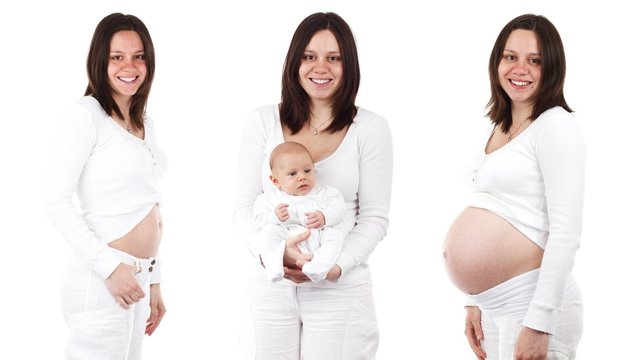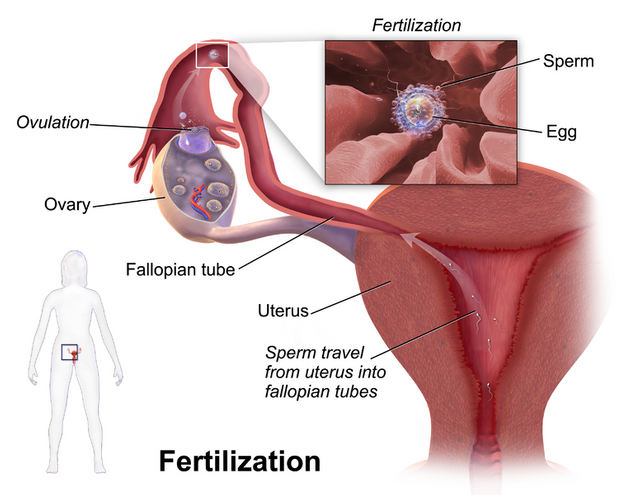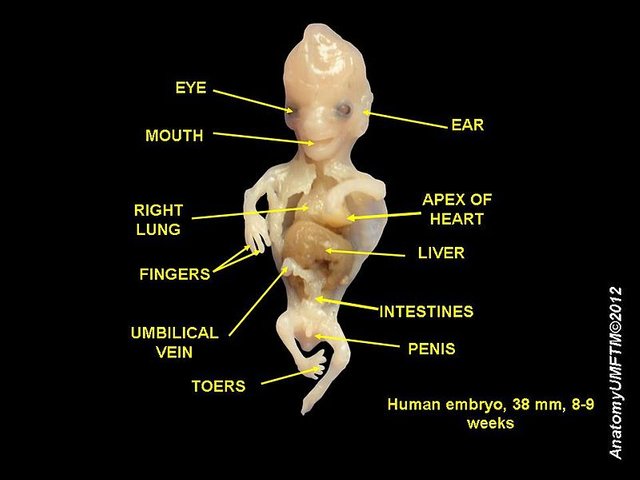The Motherhood Process

Pixabay CC0
The birth of a baby is a marvel, a miracle, far greater than the most intricate nuclear device, or the most elaborate machine. No other creature in the world has such a wonderful future as a human baby, none has so many untold possibilities.
Like all other animals, a baby begins from just one single cell, the human ovum. This tiny egg cell is born in the ovary, the female egg-forming organ located just to the side of the uterus. All normal women have two ovaries, one on each side of the uterus, lying close to the ends of the Fallopian tubes, or oviducts. Each month, about 14 days from the beginning of her last menstrual period, a tiny egg or ovum is produced. This human egg has been specially prepared in a tiny pocket of cells deep within the ovary. At precisely the right time, it leaves the ovary, and enters the Fallopian tube, or oviduct. This process, known as ovulation, lasts several days. It is the only time a woman can actually become pregnant except some cases that I term miracle.
The female cell or ovum already carries the characteristics of the mother. It is many thousands of times larger than the male cell or sperm, which carries all the family traits of the father. Only one sperm cell is needed to fertilize the ovum during ovulation and with the union of these two cells, fertilization is complete. Already, future characteristics of the new individual, the color of the hair and eyes, texture of the skin, even the shape of the fingernails, have been determined. Wonderous things lie ahead, for in the next nine months, that tiny speck will grow into a baby, billions of times larger than it is now.
LIFE BEFORE BIRTH

Blausen.com staff (2014). "Medical gallery of Blausen Medical 2014". WikiJournal of Medicine Via Wikimedia commons
At first, there is only one cell, but things do not remain like this for long. Soon that cell begins to grow and expand until it doubles in size. Then it promptly divides into cells, each the same size as the original. These continue to divide, and soon there are four, then eight, sixteen, thirty-two, sixty-four, and so on. Each change proceeds in perfect order, except in those very rare cases where an abnormal cleavage may produce twins, each exactly like the other. However, most twins are not identical.
False developments may produce certain deformities, such as hare-lip, cleft palate, shrivelled limbs, or an abnormal heart. These are not common. In the olden days, people blamed the gods, thinking nature was making a cruel sport of them. Babies born with such deformities were termed abominations. But today, we all know these growth changes are quite normal. No longer do we blame nature for an occasional mistake. Rather, we marvel at her success in producing so perfect an organism as a human baby from what appears to be such meagre material.
Within a few days, that one single cell — the fertilized ovum — has multiplied itself into a group or cluster of tiny cells all closely bound together. It travels through the Fallopian tube, or oviducts to the uterus or womb. This leisurely journey may take perhaps a week.

Human embryo at 8 weeks via wikimedia commons
Equally interesting changes are taking place in the uterus, where nature is busy preparing a soft, thick bed on which the tiny cell mass will finally come to rest. There it soon makes itself at home. That little cluster of cells, called the embryo, is hungry. So it produces certain enzymes that dissolve some of the mother’s tissues within the uterus and feeds on them. Many surprising changes begin to take place at this point. The cells continue to multiply, folding themselves into various shapes and patterns, all with their own special parts to play. Some of those tiny membranes will eventually form the skin. Others will shape themselves into digestive organs. Others will form the muscular system of the body, while others will change into bones and connective tissues.
I'll be discussing the Formation of the Brain and Nervous System in my next post. Stay tuned, don't miss it!
Thank you for reading
@scarletmedia
